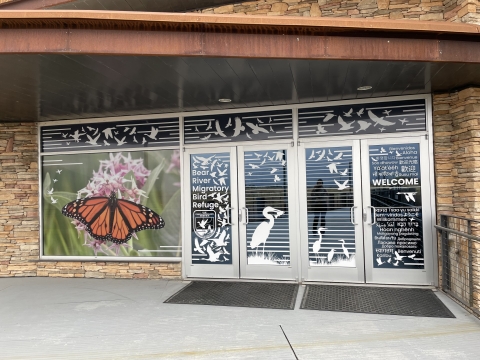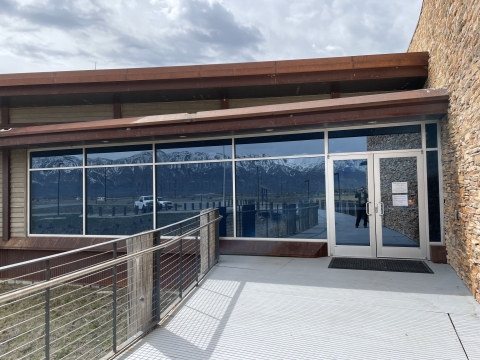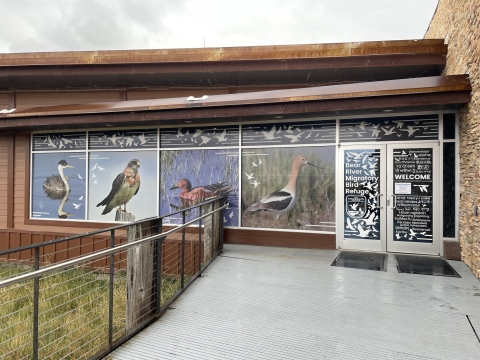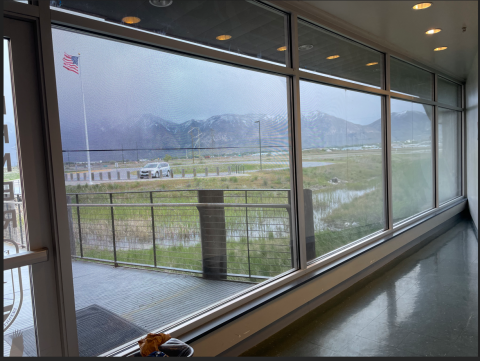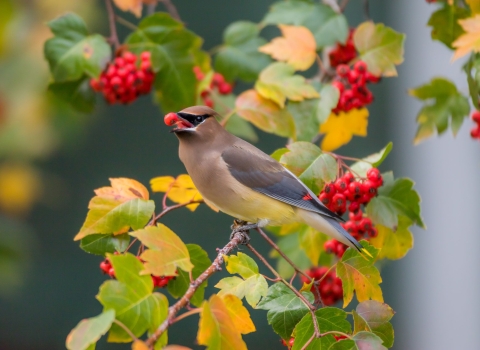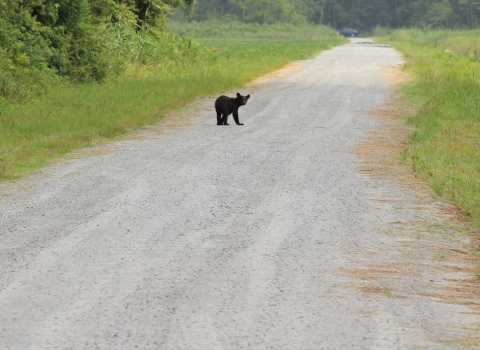Have you ever mistakenly bumped into a glass door? Ever checked your reflection in a store window on a clear day? Then you might understand the reason why bird-window collisions occur.
“Bird-window collisions” and "bird strikes" are terms used for when a bird collides with the windows of buildings, business, or homes. Glass windows can be highly reflective under different light conditions, and this can create the illusion of clear sky, trees, or water behind them. When attempting to forage for food, escape a predator, find a mate, or defend their territory, birds may fly towards those reflected images and unexpectedly collide with a window.
Scientists from the Smithsonian Conservation Biology Institute estimated in 2014 that between 365 million and 1 billion birds collide with glass and other reflective surfaces every year in the United States. Of those, homes and other 1 to 3 story buildings cause 44% of bird strikes. Most of these collisions result in severe injury or death. Bird-window collisions are the second leading cause of anthropogenic avian deaths. Bird strike prevention methods mainly focus on breaking up solid reflective panes of glass with opaque shapes which do not reflect their surroundings.
Bear River Migratory Bird Refuge in Utah has made a commitment to reduce the number of bird strikes by installing several prevention methods.
Visitor Center Entrance - Before Photo
Photo of the main entrance prior to decal installation, with high glass reflectivity.
Visitor Center Entrance - After Photo!
Photo of the Visitor Center main entrance after installation of decals, dots, stripes, bird silhouettes, and text on windows and doors. Monarch Butterfly window decal photo courtesy of Tom Koerner, USFWS. Art design for doors and windows by Stephanie Smith.
WHAT A DIFFERENCE!
This project was a full team effort. Refuge Visitor Services staff managed the project and created a concept design. GAOA staff coordinated project implementation, including the installation of thousands of dots! A budget analyst from the Fire and Law Enforcement program did the design work for the silhouettes, windows, and doors while detailing as a Visual Information Specialist. The Refuge worked with a non-profit organization to print the dots and door designs and a local small business to print the bird photos and silhouettes.
The implementation was part of the Refuge’s on-going efforts to implement the Service’s Standards of Excellence of Community Engagement. The Refuge wanted to “Model Sustainability” by showing visitors multiple types of bird strike prevention options, and the Refuge’s nature store now sells some of the products used by the Refuge.
In addition, the entrance doors were specifically designed to “Ensure People Feel Safe and Welcome” and follow recommendations made by a contractor during visitor planning efforts. The doors include the word “Welcome” in 40 of the most commonly spoken languages in Utah, the Refuge name, and the USFWS logo.
Side Entrance - Before Photo
Large windows and doors reflect the landscape, which causes confusion for birds that mistake the glass as open air.
Side Entrance - After Photo!
Turning hazards into art! Photographs for window decals of Western grebe, Cinnamon teal and American avocet by Brian Ferguson, and Swainson's hawk by Patricia Mezza, USFWS.
Wonder what it looks like from the inside?
"The solid photos basically looks like you're looking through a screen door,” shared Karleen Vollherbst, Visitor Services Manager at Bear River Migratory Bird Refuge. "We love sharing the design, art, and options with others!"
This issue is gaining traction.
The American Bird Conservancy produced a Glass Collisions Product and Solutions Database which analyzes the threat factors to bird safety of glass window types and bird strike prevention methods.
We all have the opportunity to walk the walk, implementing feather-friendly practices at our homes, offices, and facilities. In the Service, all new or redesigned building projects of non-historic federal facilities must comply with the General Services Administration Public Building Facility Standards. These regulations include guidelines on the materials, location, heights, and shapes of glass windows on federal buildings.
Spring migration is happening! What can you do to reduce light pollution at night, draw your blinds, retrofit your windows, or help birds in other ways?


